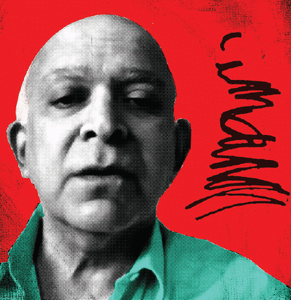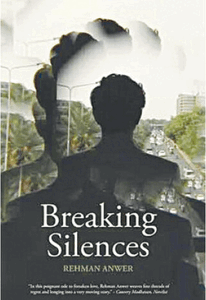
The Golden Road: How Ancient India Transformed the World
By William Dalrymple
Bloomsbury Publishing
ISBN: 978-1-4088-6442-5
482pp.
Willaim Dalrymple’s The Golden Road is a masterly compression of a story of the transfer of ideas, goods and people from India to different parts of the world across almost two millennia (250 BCE-1200 CE).
The huge gamut Dalrymple covers includes religions — Buddhism and Hinduism — the Sanskrit language, literature, philosophy, astronomy, mathematics, medicine, architecture, other artistic practices such as dance, music and painting, and goods — including spices and textiles — to create, what he calls and convincingly describes as, an ‘Indosphere’.
He makes an irrefutable argument for the role of the Indosphere in great transformations in the history of ideas and everyday lives of people across the globe — making synchronic and diachronic connections.
Travel, journeys and roads remain significant realities and tropes in shaping Dalrymple’s worldview. His first book, In Xanadu: A Quest (1989), is a travelogue that captures the breathless curiosity of a young Cambridge undergraduate’s 16,000-mile overland journey in the footsteps of Marco Polo, from the Church of the Holy Sepulchre in Jerusalem to Shangdu in Inner Mongolia, in China.
William Dalrymple’s latest book is a treat of expansive history, providing fresh insights into the westward and eastward expansion of the cultural, philosophical and material influence of ancient India
As we witness the present devastation and genocidal expunging of the Muslim and Christian people and the material cultures of Palestine, a destroyed Syria and Lebanon, and the difficulties of journeying through a devastated Afghanistan and Iran (especially for Western travellers), In Xanadu is an archival must read.
Dalrymple has since morphed into a grand historian of our times. His passion for the subject in hand, his stylistic verve, and gripping descriptions of people, places and objects lure the reader into his world. His latest book is a treat, with a rich blend of a sturdy archive, stunning plates (sadly without a list), his pleasing prose, and infectious jouissance.
Dalrymple’s ‘Road’ in this book constitutes the sea routes, propelled by the Promethean monsoon, a compelling presence in the book. “The regularity and predictability of these winds… have allowed millennia of Indian sailors to raise their sails and propel themselves at speed across the oceans that surround them, [and] then when they reverse, safely back again.”
The book provides fresh insights into the westward and eastward expansion of the Indosphere along the Golden Road of the seas — from trade with the Romans to Britain’s colonial conquest of India in the guise of the East India Company’s seafaring trade.

Such is Dalrymple’s commitment to the idea of his ‘Golden Road’ that he debunks the idea of ‘Silk Roads’, skilfully charted by Peter Frankopan in The Silk Roads: A New History of the World (2015). In a cheeky gambit, he takes a scholarly finesse and acknowledges his friend Peter Frankopan.
Dalrymple, nevertheless, makes a forceful case for the Golden Road, usually overlooked in historical scholarship — and he cites the more recent explorations in the work of Sunil Amrith. He tracks the spread of Buddhism, Hinduism, Sanskrit and related art forms and practices in places such as Java and Cambodia — home to the largest Hindu temple in the world: Angkor Wat (1150CE).
Yet, the Golden and Silk Roads were coeval. In his opening chapter, Dalrymple quotes Xuanzang, whom he describes as “one of China’s greatest scholars, travellers and translators in the early seventh century CE, who wrote The Great Tang Records on the Western Regions — after a land journey from Chang’an in western China to Kanchipuram in southern India and back.”
Indians and Pakistanis born in the 1940s and 1950s will recall sharing with their elders, accounts of merchants — Uighur, Turkman, Tajik and others — vending Chinese brocades, fine teas and Gardener porcelain across South Asia, with huge baskets strapped to the back of their bicycles, long before the much-derided (by critics of China, and Dalrymple) Belt and Road Initiative.
Dalrymple asks important questions about the politics of knowledge production: “If India’s transformative effect on the religions and civilisations around it was so central to world history, why is the extraordinary diffusion of its influence not better and more widely known?” He ascribes “some of the ignorance to Victorian Indology”, and our bête noir, Macaulay, “which undermined, misrepresented and devalued Indian history, culture, science and knowledge.”
In A Home in the World, A Memoir (2021), Nobel laureate Amartya Sen, who between 1940 and 1950 studied at Rabindranath Tagore’s Shantiniketan (founded in 1901), recalls how he pursued both Sanskrit and the works of Aryabhata (476-550 CE) the mathematician, not taught in schools regulated by the colonial government.
Dalrymple ends by asking if Indian ideas, once again, can transform everything they touched. With India in the grip of Hindutva ideologies and retellings of history, he provides an answer, by describing how the transmitters of knowledge were places and people of Buddhist learning… and quotes Xuanzang, writing that all learned people “looked with profound reverence at Buddhist universities and monasteries such as Nalanda — with tens of thousands of learned monks.”
Another blow to Hindutva hubris of dominance is Dalrymple’s account of the spread of Indian mathematics across the Western world by Muslims. He writes, “In the winter of 779, a delegation from the Raja of Sindh arrived in the newly built city of Baghdad, carrying The Treasury of the Books of Wisdom” — a book on Indian mathematics that the Arabs began to call ‘the great Sindhind.’
In Baghdad, under the Abbasid viziers were a family of Sanskrit-literate hereditary Buddhist abbots from Afghanistan who had converted to Islam: the Barmakids. Will the Afghan Taliban, who destroyed the Bamiyan Buddhas, return to their pre-1980s past and rebuild what their ancestors protected for centuries? Dalrymple mentions the destruction of Buddhist and Jain sites, first by Hindus, and later by Turkic Muslims.
Dalrymple describes how, in Europe, the knowledge of ancient India was cross-fertilised by the Arabs with that of ancient Greece. He quotes the Italian mathematician Fibonacci (c.1170-1250) who records how, in Bejaia in what is now Algeria, he was “introduced to a wonderful kind of teaching that used the nine figures of the Indians. With the sign 0, which the Arabs call zephyr (al-sifr), any number whatsoever can be written.”
With a focus on Muslim rule in Toledo, he describes a period of “a wholesale transfusion of Indo-Islamic learning, which revolutionised mediaeval Europe and helped give rise to a renewed culture of science in the West, [that] cannot be exaggerated.”
Indeed, with the genocide in Gaza unfolding before the world, to recall the 800 years of Muslim rule in different regions of what is now Spain and the peaceful co-existence and collaboration between Muslims, Jews and Christians in the arts, humanities and the sciences, is a dark irony. It ended with a ‘Christian Reconquista’, a genocidal inquisition, which propelled the expulsion of Muslims and Jews from Spain.
Dalrymple asks if India can return to its cutting-edge role as a leader in the world of ideas. The Golden Road calls for reflection on how we deploy our roads — as we read and watch stories of seas as graveyards for men, women and children seeking safe havens. It is a timely reminder that empires, ancient and contemporary, have the potential to spread conviviality, learning and peaceful coexistence, as well as wars, xenophobia and devastation.
Yet again, William Dalrymple has given us much to consider as we look to the past to understand the human condition.
The reviewer is a historian, a screenwriter, a translator and rights activist.
Published in Dawn, Books & Authors, October 27th, 2024


































